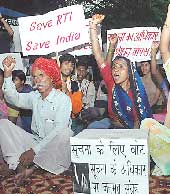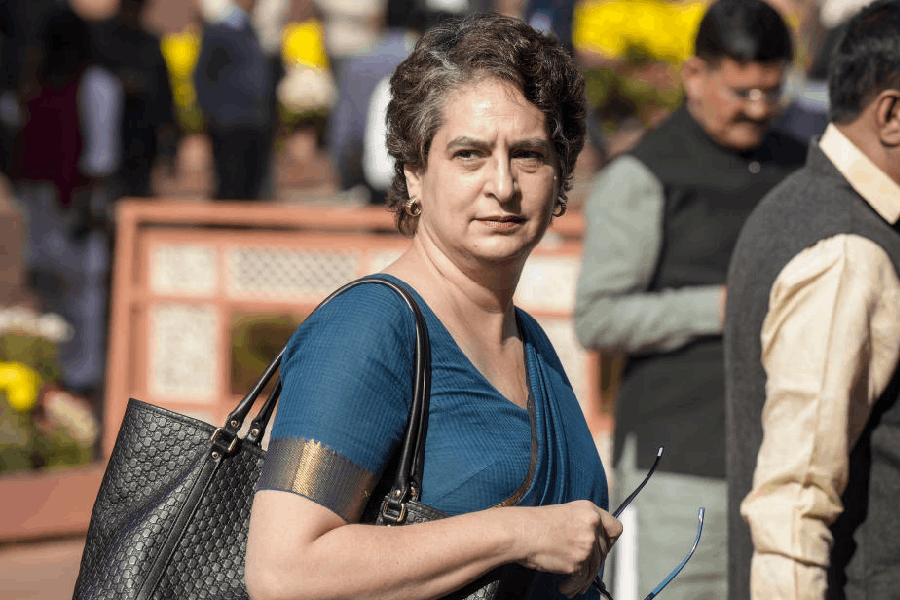|
|
The Rights And Wrongs of IT: The Right to Information Edited by Bhabesh Das and Rajiv K. Bhattacharyya, Gangchil, Rs 700
The Rights and Wrongs of It: the Right to Information, edited by Bhabesh Das and Rajiv K. Bhattacharyya, is an anthology of essays that rumble with discontent, questioning the amended RTI law. In the Preface, the editors admit that they have not been able to put together the last word on the subject.
This collection begins with the essay, “Keeping the democratic system alive; fighting for the right to know in India”, by Aruna Roy and Nikhil Dey, which highlights the efforts of the Mazdoor Kisan Shakti Sangathan — an NGO comprising marginal peasants and landless workers — in fomenting their RTI demands through hunger strikes, dharnas and jan sunwais (mass hearings). The MKSS initiated the agitation in Devdungri village in Central Rajasthan and paved the way for RTI movement in India.
In her essay, “The fight must go on”, Mahasveta Devi has questioned the meaning of information for those struggling to survive. Instead, she concentrates on human rights and basic education. “What is the point in passing an act when there is no way that the people for whom it is meant can get it?” Her disillusionment and frustration with the state machinery, including the press and the intelligentsia in the Amlasole starvation deaths and similar deaths in tea gardens are evident.
On the contrary, Snehasis Sur, in his “Empowerment through information: a year’s experience”, shows how rapid dissemination of information can safeguard human interests even in an otherwise dark scenario, by quoting Amartya Sen’s valedictory address at the International Press Institute’s conference in New Delhi. Keeping in mind the Chinese famine of 1958-61 in which almost 30 million people died, Sen commented, “...the Chinese government...did not substantially revise its disastrous policies during the three famine years. Because of the absence of an uncensored press and other modes of public communication, the local officials across China were under the impression that while they themselves had failed, the other regions had done well. The totality of the reported numbers vastly inflated the Chinese government’s own estimate of the total amount of food grains that the country had…”
Some of the essays written by Nityapriya Ghosh, Gautam Ray, Anirban Roy, Sujit Chakraborty, Subir Ghosh and Arvind Kejriwal, present anecdotes in which certain government agencies, including the police and the armed forces are the transgressors of the right to information, and sometimes the militant groups and insurgent outfits, especially those operating in north-eastern India, are the infringers. While it is a matter of attitude to Sukanta Chaudhuri, Dipankar Dasgupta blames it on corrupt society. Ashok Mitra holds that linguistic barriers, along with ethnic and cultural diversities, are posing a hindrance to the proper dissemination of information even in parliamentary affairs. Most parliamentarians choose the easy option of non-participation except when the situation demands some rabble-rousing, hurling of invectives or walking out.
Asit Ranjan Bandyopadhyay brilliantly discusses the limits of transparency. He asks to bring the private sector under scrutiny and prescribes specific correctives for each level of public service. Some contributors prefer social audit as well as participant citizenship and the right kind of communication through various new media in a bid to change the culture of secrecy worldwide. Manusher Jonno, a Bangladeshi NGO, presents a candid picture of the current situation in Bangladesh. The right to information has emerged as an important issue there, having direct connections with livelihood. Putting much stress on the ‘content revolution’, Chakraborty and Kundu beautifully mingle Bill Gates’s ideas in their ‘Information on sale”. Their advice to today’s young entrepreneurs may be summed up in a single word: Information.












